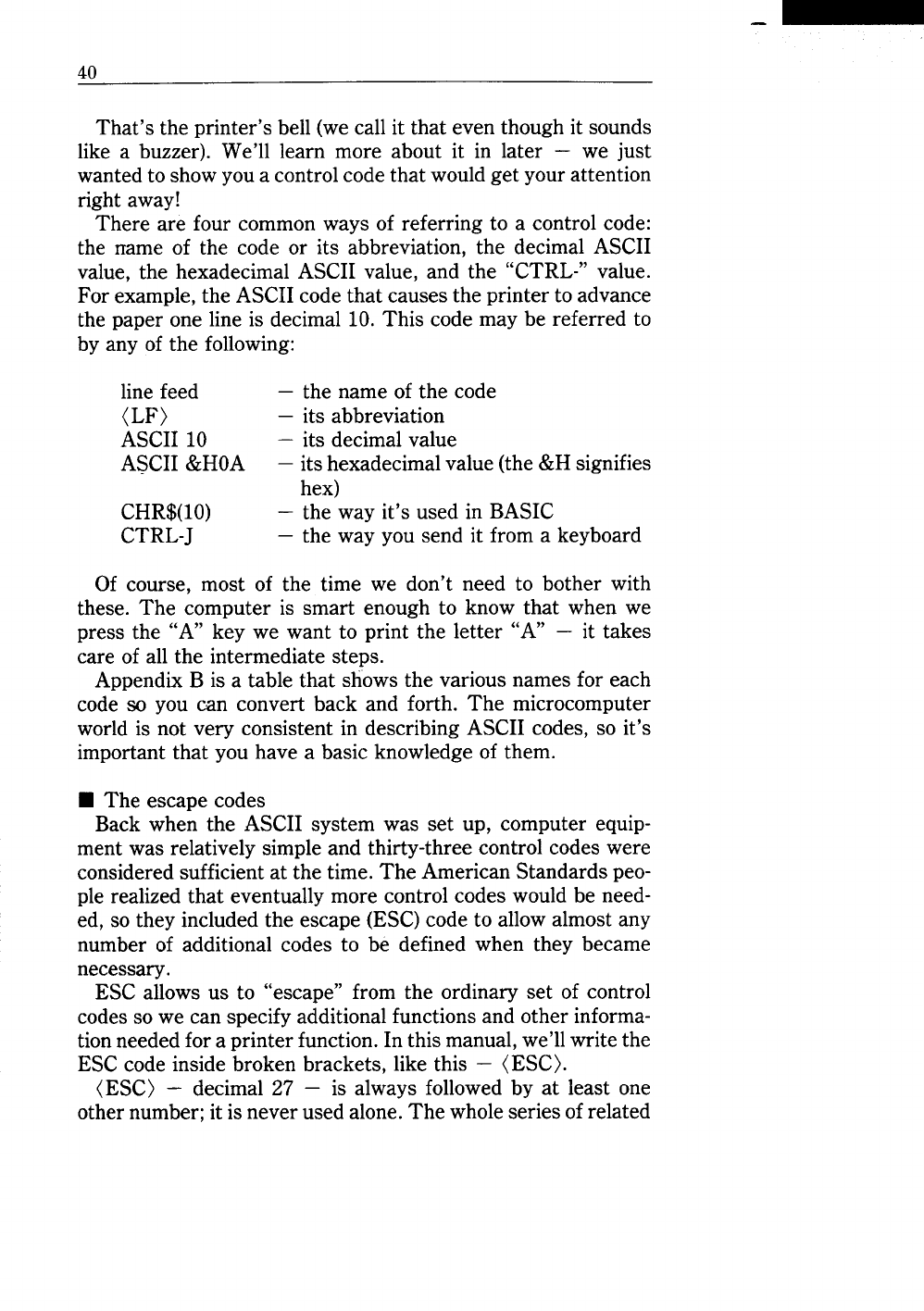
40
That’s the printer’s bell (we call it that even though it sounds
like a buzzer). We’ll learn more about it in later – we just
wanted to show you a control code that would get your attention
right away!
There are four common ways of referring to a control code:
the name of the code or its abbreviation, the decimal ASCII
value, the hexadecimal ASCII value, and the “CTRL-” value.
For example, the ASCII code that causes the printer to advance
the paper one line is decimal 10. This code may be referred to
by any of the following:
line feed – the name of the code
(LF) – its abbreviation
ASCII 10 – its decimal value
ASCII &HOA – its hexadecimal value (the &H signifies
hex)
CHR$(1O) – the way it’s used in BASIC
CTRL-J
– the way you send it from a keyboard
Of course, most of the time we don’t need to bother with
these. The computer is smart enough to know that when we
press the “A” key we want to print the letter “A” – it takes
care of all the intermediate steps.
Appendix B is a table that shows the various names for each
code so you can convert back and forth. The microcomputer
world is not very consistent in describing ASCII codes, so it’s
important that you have a basic knowledge of them.
H The escape codes
Back when the ASCII system was set up, computer equip-
ment was relatively simple and thirty-three control codes were
considered sufficient at the time. The American Standards peo-
ple realized that eventually more control codes would be need-
ed, so they included the escape (ESC) code to allow almost any
number of additional codes to be defined when they became
necessary.
ESC allows us to “escape” from the ordinary set of control
codes so we can specify additional functions and other informa-
tion needed for a printer function. In this manual, we’ll write the
ESC code inside broken brackets, like this – (ESC).
(ESC) – decimal 27 – is always followed by at least one
other number; it is never used alone. The whole series of related


















